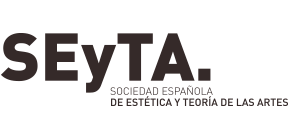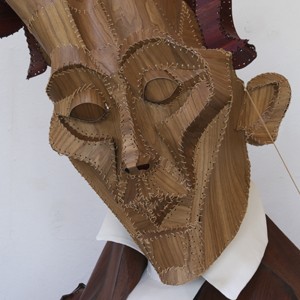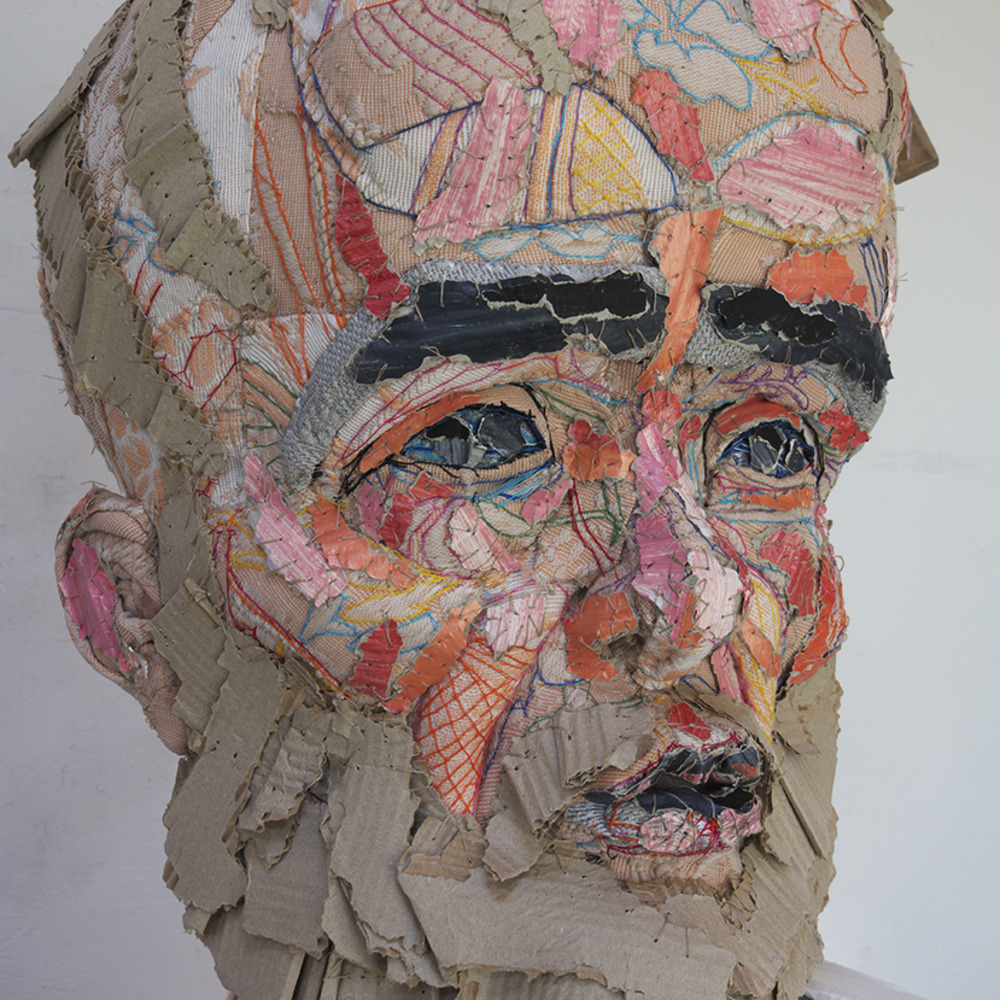La revista de filosofía de la literatura, estética y teoría de los nuevos medios Odradek abre su convocatoria de contribuciones para un nuevo número. El tema es el impacto de los nuevos medios y la tecnología en la estética como disciplina y en lo estético como dimensión de la experiencia y de los objetos. Fecha límite: 15 de mayo de 2015.
Call for papers
Aesthetics in the Age of New Media
Editors/ Marta Vero and Lorenzo Serini
Zetesis Project is glad to announce the call for paper for the first issue of a new International Journal: Odradek. Studies in Philosophy of Literature, Aesthetics and New Media Theories.
Submission deadline/ 15th May 2015
Authors can find submission guidelines at the following link/
http://zetesis.cfs.unipi.it/Rivista/index.php/odradek/about/submissions#onlineSubmissions
All papers will be reviewed according to our peer review process policy/
http://zetesis.cfs.unipi.it/Rivista/index.php/odradek/about/editorialPolicies#peerReviewProcess
ODRADEK. Studies in Philosophy of Literature, Aesthetics and New Media Theories es una revista internacional creada por Zetesis Research Group sobre las relaciones entre filosofía y poesía. Zetesis es un centro de interpretación vinculado al Departamento de Histria, Filosofía y Artes de la Universidad de Pisa.
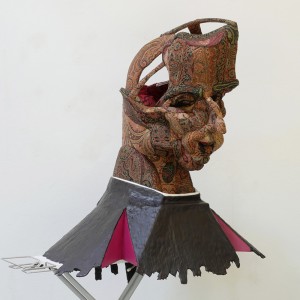
Evelyne van Duyl
Niccolò Machiavelli (1469 –1527)
130 × 180 × 60 cm, 2014
tela, cera, cuero, pintura, madera
Technology and new media are by now present everywhere. Our daily life is not only populated but also completely ruled by digital devices. We constantly live a double life: one in the actual reality and another in a parallel virtual reality. While one is sitting alone in the library, for example, he or she is not only here and now but also connected – and interconnected – with the rest of the world. On the one hand, that person is in the library and on the other – and at the same time – his or her virtual account is ‘living’ on the Internet. This is the condition of subject in the age of new media. For technology and new media are an integral part of our life to such an extent that we often take them for granted, it is, in our view, the task of philosophy to bring into question the nature and the consequences of this phenomenon. In particular, we are concerned with the status of the artistic experience of the new media subject and with the reflection on art that springs from the digitalization and the virtualization of our spaces. In other words, we invite to investigate whether and how the ‘newness’ of new media effectively changes the realms of sensibility and that of art, and to evaluate aesthetics in what we might call – recalling Walter Benjamin – the age of new media.
We believe that the word ‘aesthetics’ can broadly indicate three different – but not for this unconnected – fields of study. Firstly, (i.) according to its authentic etymology, aesthetics can be understood – as its promoter A. G. Baumgarten has conceived it – as theory of aisthesis (i.e. theory of sensibility, perception, and experience). Secondly, (ii.) aesthetics can be taken into account – in the 18th and 19th centuries’ fashion – as theory of the beautiful and taste concerned with the problem of what makes beautiful or sublime a work of art. Thirdly and ultimately, (iii.) aesthetics, in a more contemporary optic, can be considered as theory of the artistic production (poiesis).
On the one hand, we ask ourselves whether these three conceptions of aesthetics still remain valid approaches to read our current aesthetic experience in the age of digitalization and virtualization. On the other, we think that all three ways to intend aesthetics provide us a useful set of categories by means of which can fully approach the problem of art in the age of new media. Both the perspectives might be possible: the interplay between more traditional categories and a new object of study (i.e. new media object) can generate a fruitful discussion, which, at the same time, avoid to be crystallized on the traditional ideas and to be dissolved in ungrounded chat.
According to these three meanings of aesthetics, we are especially interested in the following points: (i.) how new media can change our way to experience the world, (ii.) whether and how a new media object can be considered a beautiful work of art, and (iii.) how the digital and virtual spaces of the new media object affect the creation and fruition of art (with particular regard to the notion of interactivity).
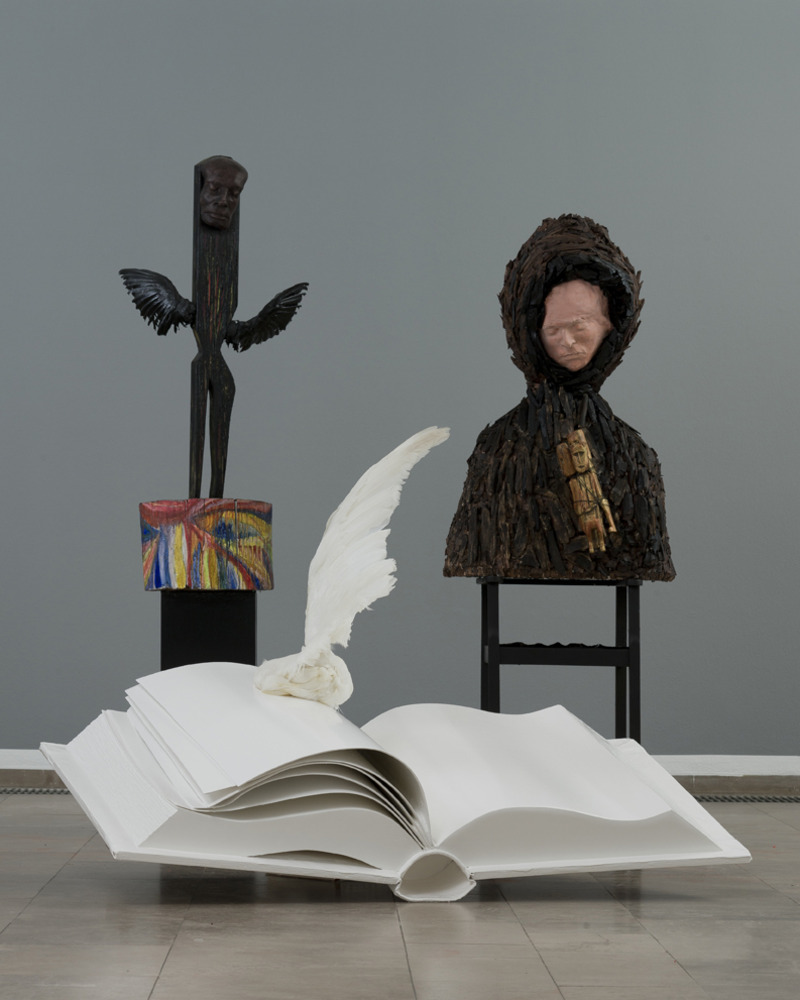
Eveline van Duyl Trilogy to Walter Benjamin, Die Stadt, Die Begegnung, Im Anfang Foto: Rüdiger Lubricht 245 × 175 × 300 cm, 2013, 3 pieces madera, barro, ala de un cisne, pintura, yeso, cuero, textiles
Topics/
The topics of the papers might include, but need not to be restricted to:
1/ New media (i.e. digital-virtual-interactive devices) – simply by their name – put themselves in opposition to ‘old’ media (i.e. analogic media). To what extent new media are effectively ‘new’? And, how the new language of the medium affects the spheres of sensibility and that of art?
2/ With the coming of digitalization and virtualization our experience of space and time has been radically modified. Accordingly, aesthetics in the age of new media has to deal with a virtual space that is for the first time deprived of its physical support and with an extended time regulated by different rules. How can the ‘new’ art face those two changed dimensions?
3/ Examining the phenomenon of routinization and weakening of the fictional (i.e. the realm of the untrue belonging to art). Nowadays, thanks to new media, fictional realities surrounds us everywhere. Screens, speakers, and Internet accompany our normal daily life to such an extent that the fictional qua fictional is less and less perceived. We are so much exposed to a ‘virtual reality’ (i.e. not physically existing but made to appear by software) that we are no more aware of the intrinsic oxymoron implicit in that common expression: virtual (i.e. being such in power, force, or effect, though not actually or expressly such), and reality (i.e. actuality).
4/ From a phenomenological perspective, what are the eidetic requirements of new media object? In particular, think of the distinction between the material support or image-thing [Bildding], the image-object [Bildobject] and the image-subject [Bildsubject]. Then, how to describe the related intentionalities and constitutive syntheses? For example, what is the role image-consciousness plays in the perception of the new media object as such? And what that of kinaesthetics experiences? Moreover, how to change the distinction between presentantion and presentification by considering the appearance of fictional object as actual present?
5/ Walter Benjamin famously diagnosed ‘the loss of aura’ of the work of art ‘in the age of mechanical reproduction.’ He pointed out that the reproducibility of the artwork deprives it of its aura, that is its shade of prestige, distance, and unapproachability. Even more so, in the age of new media, the work of art seems to have lost not only its aura but also it is own identity. The digital revolution has (irreversibly?) changed the status of art itself: art seems not able to move with the fast developing of technology and to re-define itself. Lacking a proper definition of art (i.e. a code and a set of rules), a theory of art is, on the one hand, extremely free – like never before – but, on the other, is lost in its freedom. We arrived at the paradoxical situation in which it is difficult to distinguish a common object from a work of art. What is the meaning of art in a world in which everything is able to be art?
6/ Art has always had something to do with craft. The ancient Greeks used the same word techne for both art and craft, considering the craftsmanship naturally intertwined with the artistic product. With the coming of technology and the new media, everything can be easily edited, reproduced, and diffused by everyone. Is craftsmanship still a discriminating factor in the new media aesthetics?
7/ Cinema seems to be a hybrid – and interesting – phenomenon capable of linking the old with the new media; in fact, when cinema was born (in the 1930s) it used to be the ‘new’ analog medium, then it opened to even newer technologies and redefined itself as Digital Cinema (D-Cinema). Which is the role of cinema in the age of new media?
8/ Evaluating interactivity: how the public plays both the role of spectator and co-author in the digital-virtual-interactive space of new media.
9/ Is it possible to consider computer games, which are built upon the notion of interactivity, a work of art?
10/ What is the role of art in society? Sociological, economical, and political consequences.
For further information please feel free to contact the section editors at/
lorenzoserini24@gmail.com or marta.vero90@gmail.com
Web de la artista Eveline van Duyl que ilustra esta entrada/
http://evelinevanduyl.com/island-of-thoughts-philosophers/niccolo-machiavelli-1469-1527
